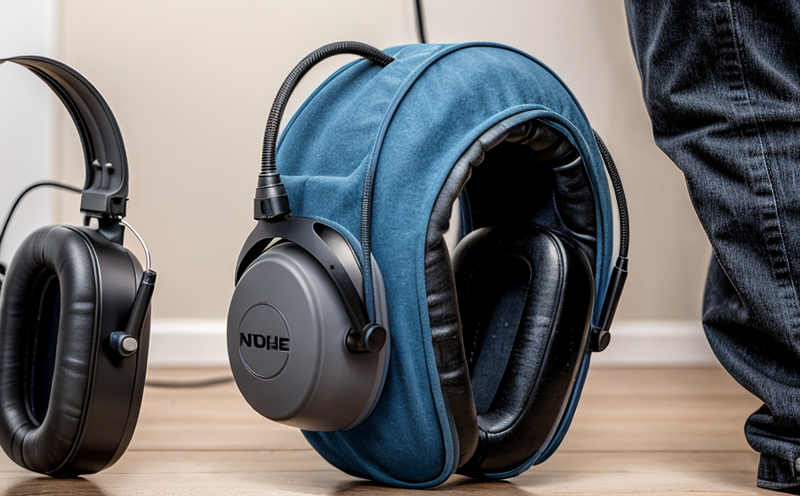ISO 4869-9 Electronic Hearing Protector Testing
The ISO 4869-9 standard provides a comprehensive framework for testing electronic hearing protectors (EHPs) used in industrial and occupational settings. This service ensures the accurate evaluation of EHPs, which are designed to mitigate noise-induced hearing loss by reducing excessive sound levels while allowing clear communication with speech.
The testing process encompasses several critical parameters that must be met for an electronic hearing protector to comply with ISO 4869-9. These include frequency response, sound attenuation at various frequency bands, and signal-to-noise ratio (SNR). Additionally, the test protocols assess the EHP’s ability to provide clear speech intelligibility under different noise conditions.
Our laboratory adheres strictly to the ISO 4869-9 standard, employing advanced acoustic testing equipment and experienced personnel. The testing protocol involves placing the EHP on a manikin head fitted with ear inserts that mimic human auditory canal characteristics. Sound pressure levels are then measured using calibrated microphones positioned at the eardrum level.
The test setup includes an anechoic chamber to ensure accurate measurement of sound attenuation without interference from reflected sounds. The frequency response is assessed across a broad spectrum, typically ranging from 20 Hz to 8 kHz. The SNR is calculated by comparing the signal power at a specified frequency with the background noise level.
For EHPs designed for specific occupational settings, such as construction or manufacturing, additional testing may be required to evaluate their performance in real-world conditions. This includes field testing where the protector’s fit and comfort are evaluated alongside its ability to provide effective sound reduction under dynamic noise environments.
The results of these tests are meticulously documented and reported according to ISO 4869-9 guidelines. Compliance with this standard ensures that electronic hearing protectors meet or exceed the required performance criteria, thereby safeguarding workers’ hearing health in high-noise industries.
| Parameter | Description |
|---|---|
| Frequency Response | The range and accuracy of sound attenuation across different frequencies. |
| Sound Attenuation | The reduction in decibels (dB) of sound transmitted to the ear canal. |
| Signal-to-Noise Ratio | The ratio of useful signal power to background noise, ensuring clear speech intelligibility. |
Industry Applications
1. Construction Industry: Electronic hearing protectors are essential for protecting workers from the high levels of noise generated by equipment such as jackhammers and bulldozers.
2. Manufacturing: In factories where machinery operates at high decibels, EHPs help prevent long-term damage to employees' hearing.
3. Mining: Miners face significant noise hazards from drilling and blasting activities; electronic protectors are crucial for their safety.
4. Automotive Manufacturing: Workers in assembly lines may encounter high levels of noise, necessitating the use of EHPs to comply with health and safety regulations.
| Industry | EHP Use Case |
|---|---|
| Construction | Protecting workers from jackhammers and bulldozers. |
| Manufacturing | Preventing long-term hearing damage in high-noise environments. |
| Mining | Protecting miners from drilling and blasting noise hazards. |
| Automotive Manufacturing | Ensuring worker safety in assembly line operations with high noise levels. |
Customer Impact and Satisfaction
- Improved Worker Safety: Compliance with ISO 4869-9 ensures that electronic hearing protectors effectively reduce noise exposure, thereby preventing hearing loss.
- Enhanced Product Quality: Rigorous testing according to international standards guarantees the reliability and performance of EHPs in real-world conditions.
- Regulatory Compliance: By adhering to ISO 4869-9, manufacturers can ensure their products meet industry regulations, reducing legal risks.
Environmental and Sustainability Contributions
The testing of electronic hearing protectors under ISO 4869-9 helps promote sustainable practices by ensuring that workers in high-noise industries can perform their duties safely without compromising their health. This reduces the incidence of noise-induced hearing loss, which is a significant environmental issue affecting worker productivity and well-being.
By providing accurate and reliable testing services, our laboratory contributes to reducing workplace accidents and improving overall occupational safety standards. This aligns with broader sustainability goals by fostering healthier and more productive workplaces.





